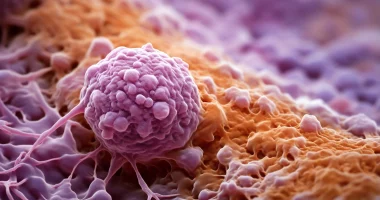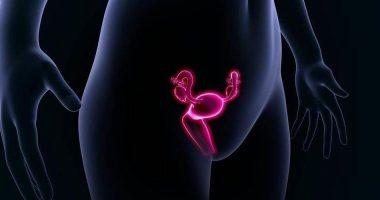Interrupted aortic arch (IAA)
Definition
Interrupted aortic arch is a congenital vascular malformation that represents a lack of communication between this main artery’s ascending and descending parts. A genetic etiology of the disease is not excluded. The clinical picture includes respiratory dysfunction and insufficient kidney, liver, and myocardium. When diagnosing the condition, physical methods and instrumental studies are used: electrocardiography, radiography, MRI of the thoracic region, and ultrasound of the heart and vessels. Treatment is exclusively surgical and can be performed by two- or one-stage method.
General information
Aortic arch interruption (aortic arch atresia, atypical coarctation) is a rarely observed pathology. The average population incidence is 0.03 per 1,000 newborns, 0.5% of all congenital cardiovascular malformations, and 1.1% among their critical forms. The life expectancy of patients varies widely and largely depends on the timing of surgical treatment, but it is often extremely short. 70% of patients die during the first month after birth; the rest survive due to a richly developed collateral system. In 15% of reported cases, the described vascular defect is part of Di Giorgi syndrome (primary immunodeficiency).
Causes
The etiology of the absence of communication between the parts of the aorta remains incompletely understood. It is known that the pathology belongs to embryonal anomalies and most likely represents a genetic defect. This is indirectly confirmed by the frequent association of the malformation with the hereditary disease Di Giorgi syndrome.
Predisposing factors of atypical coarctation are common to any genetic pathology. The risk group includes children of women who give birth after 35 years of age, lead unhealthy lifestyles, or are in closely related marriages, as well as people born into families with a history of two or more miscarriages or who already have a sick child. During pregnancy, infectious diseases of the mother, such as smallpox, epidemic mumps, influenza, and measles, can lead to teratogenic effects.
Symptoms
Clinical manifestations differ in patients of different age categories. In newborns, the pallor of the skin, difficulty breathing, diffuse moist wheezing in the lungs, diuresis disorders up to anuria, and acidosis come to the fore. A characteristic symptom is cyanosis of the lower half of the trunk after intravenous administration of prostaglandin E1. This phenomenon results from arterial duct opening and blood discharge from the pulmonary artery into the descending part of the aorta. An unfavorable course of pathology in the child may increase pulmonary edema.
When the arterial duct closes naturally, the condition worsens severely. There is a syndrome of poor cardiac output, manifested by insufficient filling of the rhythm, dyspnea at rest, and palpitations. An indirect unfavorable sign is the disappearance of the pulse on the lower extremities. The patient first becomes agitated and then enters the stage of inhibition. In the presence of Di Giorgi’s disease, the symptoms of immunodeficiency are additionally attached: persistent illnesses, severe course of infectious pathologies, and frequent complications.
Older children are often asymptomatic. The fact that they were able to survive with such a severe hereditary defect almost always indicates that the patients have developed a robust collateral network that can compensate for the lack of connection between the aortic segments. Sometimes, patients complain of weakness, leg pain during physical exertion, headaches, and bleeding on the background of developed arterial hypertension.
Diagnosis
Detection of this pathology is usually carried out at the stage of pregnancy during a woman’s routine visit to the ultrasound room and subsequent consultation with an obstetrician-gynecologist. Otherwise, the diagnosis is made after delivery by neonatologists and pediatric cardiologists. Physical examination methods are of great importance. In particular, palpation determines a weak pulse on the legs; auscultation listens to the amplification of the II tone over the base of the heart, and systolic murmur in the second intercostal space, which indicates impaired hemodynamics. Instrumental methods used:
- Electrocardiography. The basic method of diagnosing cardiovascular pathologies can detect signs of right ventricular hypertrophy and right bundle branch blockade in aortic arch atresia. With a significant violation of hemodynamics, left ventricular enlargement and impulse conduction disorders are present in this part of the organ. However, it should be taken into account that in 20% of cases, ECG pathology is not detected.
- Cardiac ultrasound. The main method of investigation for this fetal malformation. Arch interruption can be suspected by a significant discrepancy between the diameters of the ascending aorta and the pulmonary trunk. The nature of the brachycephalic vessels and their flow capacity can also be determined. In contrast to the physiologic direction of the arch to the rear, the course of the carotid arteries is directed upward in the case of a vessel anomaly.
- Magnetic resonance imaging allows for the obtaining of a three-dimensional image of the vascular bundle, the establishment of the nature of the carotid artery branching, and the confirmation of the absence of a path from the descending to the ascending part of the aorta. A significant disadvantage of the method is the impossibility of differential diagnosis between the interruption and severe hypoplasia of the arch.
- Radiography. A nonspecific method that allows indirect suspicion of aortic rupture. As a consequence of pulmonary hypertension and subsequent hypertrophic, dilated myocardial degeneration, cardiomegaly, increased pulmonary pattern, pulmonary venous congestion, and incipient pulmonary edema can be seen in the image. In Di Giorgi syndrome, the upper mediastinum may be slightly narrowed due to the absence of the thymus gland.
- Laboratory diagnosis. Blood gas composition, including the level of pH and pCO2 and the concentration of buffer systems, can determine the presence of decompensated metabolic acidosis. Biochemical analysis reveals markers of ischemic liver damage (high levels of ALT, AST, LDH) and kidney damage (creatinine).
Treatment of aortic arch interruption
Conservative therapy
Pathology is an absolute indication for surgical intervention. In newborns, who can poorly tolerate surgery in the first days of life, a short-term treatment with prostaglandin E1 is possible. This substance affects blood vessels, reducing peripheral resistance and improving blood perfusion. It also reduces the risk of thrombus formation, helps maintain the patency of the open arterial duct, and prevents its overgrowth.
For the same purpose, in some cases, an artificial lung ventilation device in the oxygen-free hyperventilation mode is used. This procedure increases pulmonary blood flow and prevents the closure of the natural communication of the two main vessels. An obligatory condition – control and, if necessary, correction of metabolic acidosis and serum calcium level. All these methods are auxiliary, and after the stabilization of the patient, surgery is mandatory.
Surgical treatment
According to studies, the overall surgical lethality in surgical correction of atresia is approximately 30%. In addition, the treatment of aortic defects remains a problem of modern medicine because most patients are initially in a severe condition with severe heart failure and anuria. The use of new techniques, the improvement of old ones, and the introduction of prostaglandin E1 infusions in the preoperative period allow us to hope for a rapid improvement of the situation. The intervention itself is performed according to one of two options:
- Two-stage method. The main points of this method at the first stage are restoration of the integrity of the aortic arch by implantation of own tissues or vascular prosthesis with one-stage ligation of the arterial duct and temporary narrowing of the pulmonary artery. In the second turn, the interventricular septal defect (if present) is closed. Parts of the carotid or subclavian artery can be used as endogenous material. Autograft does not provoke thrombosis and immune activation, simplifying the course of the postoperative period and reducing the likelihood of repeated interventions.
- One-stage method. It represents direct anastomosis of the descending and ascending parts of the aorta under conditions of artificial circulation apparatus and hypothermia. This method is technically more complicated, but it is preferable when combining the interruption with multiple additional heart and vascular malformations, as it gives surgeons the maximum amount of time for their elimination. The operation is also used in the combination of atypical coarctation with a common arterial trunk and transposition of the main vessels.
You can find different hospitals, that perform Interrupted aortic arch here: https://doctor.global/results/diseases/interrupted-aortic-arch-iaa.
Prognosis and prevention
The natural course of the disease is unfavorable. With surgical treatment at an early age, after infusion therapy with prostaglandins, the prognosis is generally favorable. In the distant period, there is a high probability of repeated operations. There is no specific prevention. Married couples with aggravated heredity before pregnancy are recommended to visit a family planning center and consult with a geneticist. During pregnancy and preparation for gestation, a woman should adhere to the principles of a healthy lifestyle, limit or better exclude the effects of tobacco and alcohol, and prevent and timely treat teratogenic intrauterine infectious pathologies.


